In the town I live, there is a small auction house which every week puts up their list of items for the next auction on their website. I check this every week just in case there are any computers in there that I would be interested in. This week there was, so I put in an absentee bid without visiting to see if I could get it. I won!
The Auction
This is the image I saw on the auction website. Due to work commitments, I couldn’t go down and see it in person prior to the auction.
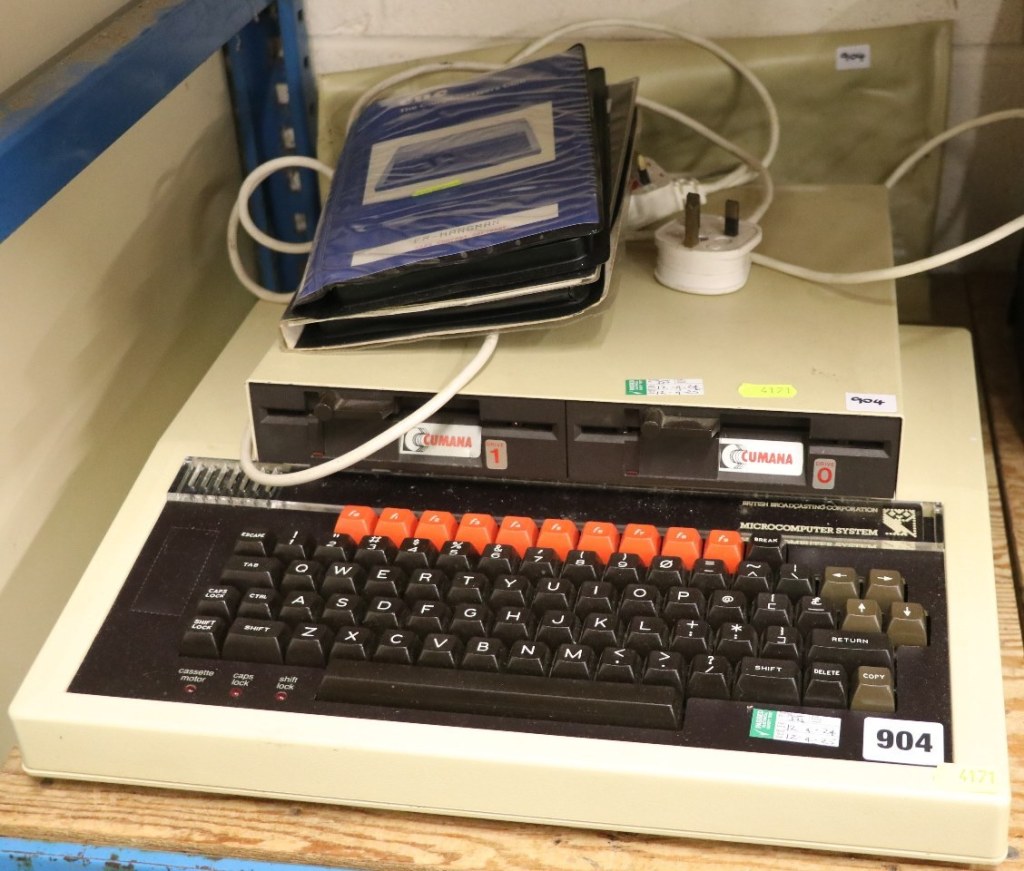
A BBC B that looks like it is in good condition, the “ashtray” hasn’t been pushed in either. It has twin Cumana disk drives, a little bit of software and a dust cover. Given that it has a dust cover, I figured it was going to be well looked after.
After I picked it up, I took a look to see which model I had.
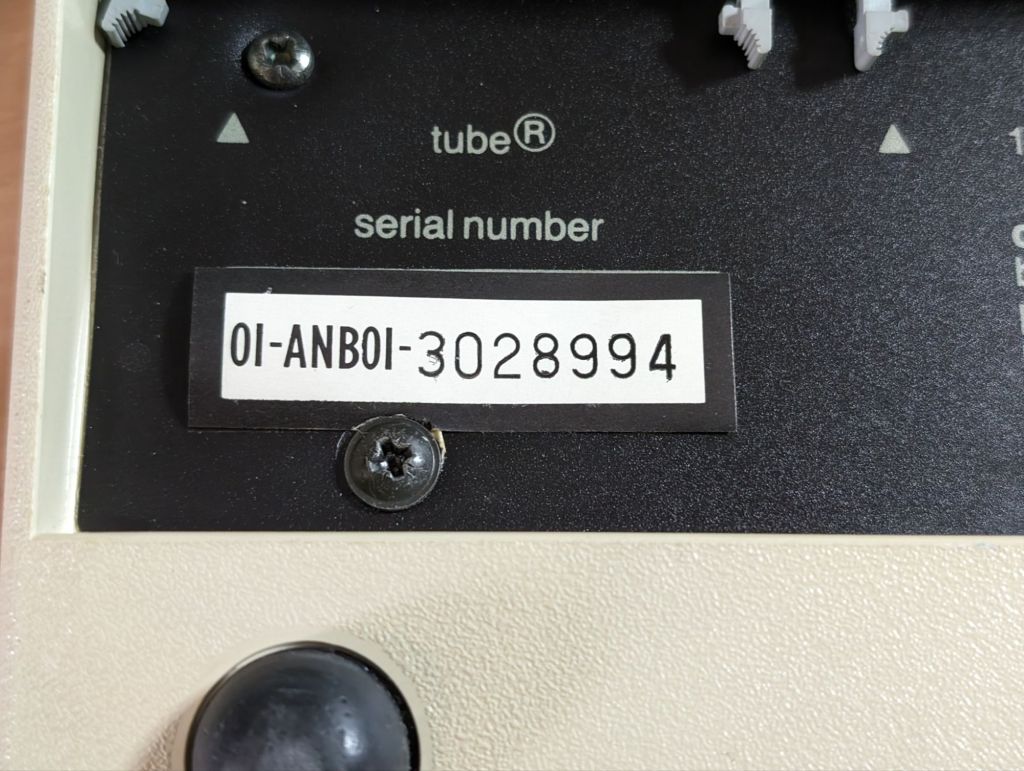
ANB01 indicates that it was a BBC Micro without disk interface or Econet, given that it came with disk drives, it seems clear that there is at least one upgrade in here. So, I opened it up to find out.
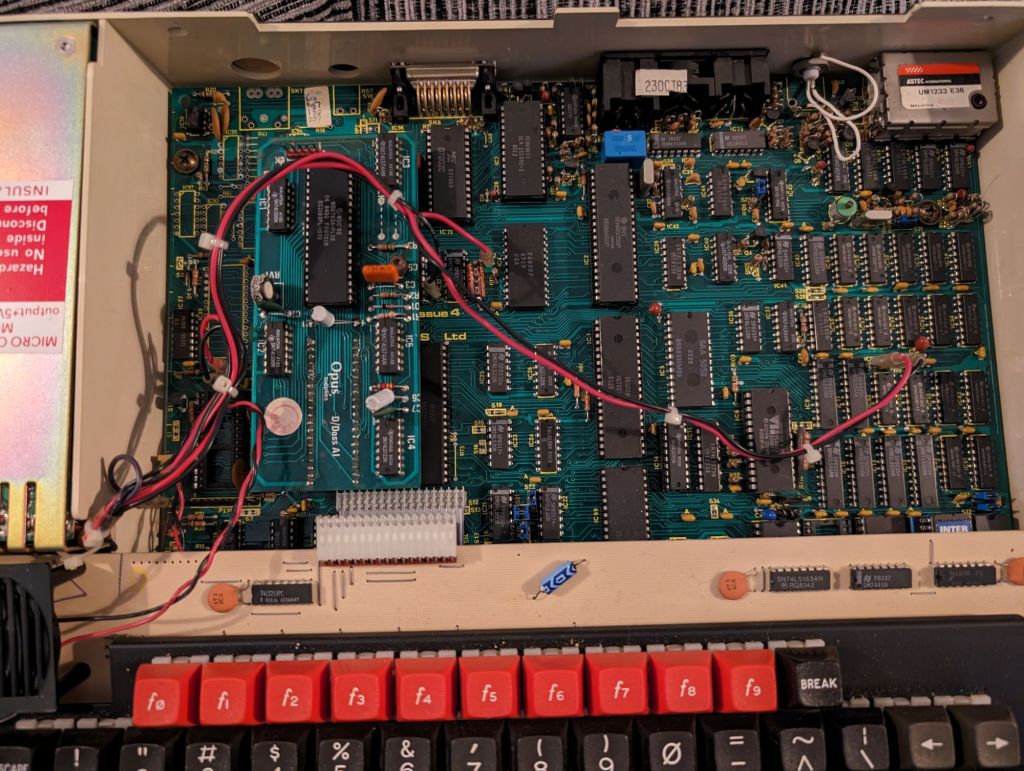
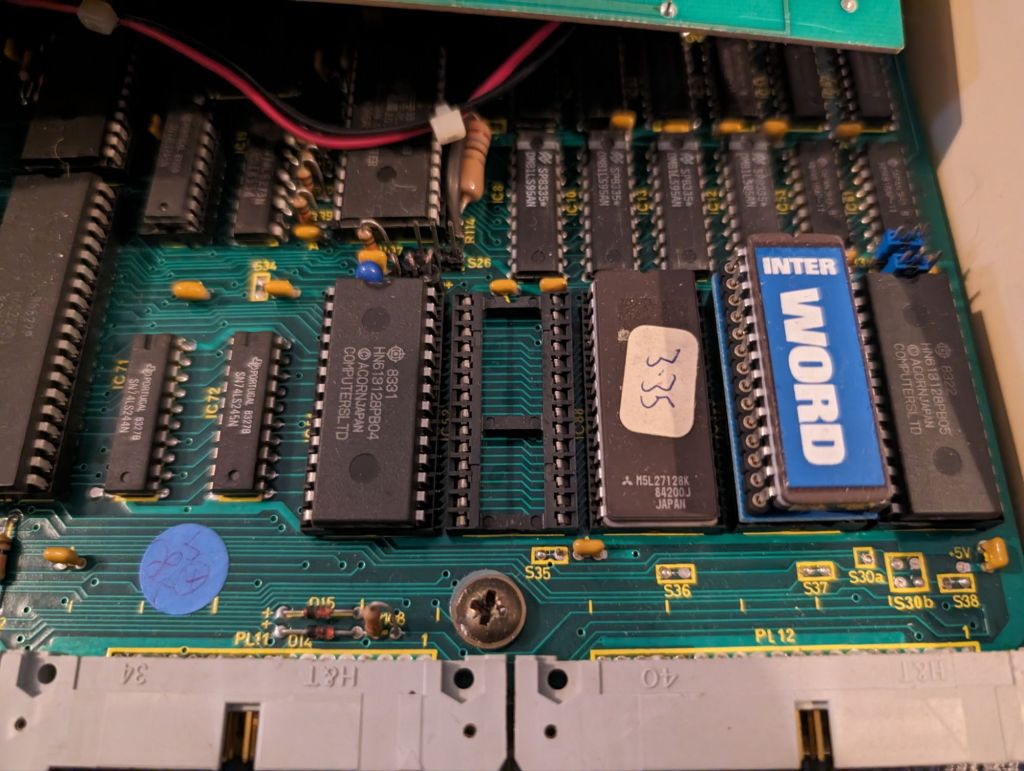
We have a standard issue 4 motherboard, with a DFS upgrade I’ve not seen before. It is an Opus D/Doss A1 based on the WD2791 disk controller. BBC Micros typically use the Intel 8271 or the WD1770. From what I can tell from searches, this is compatible with regular DFS, but adds support for an MFM based disk format that is similar to PCs as well.
The 3.35 marked EPROM will be the disk interface ROM and InterWord which sits on its original adapter which handles bank switching for the 32K ROM in a 16K socket.
Testing
As I haven’t inspected the PSU yet, I tried testing with my USB-based power supply.
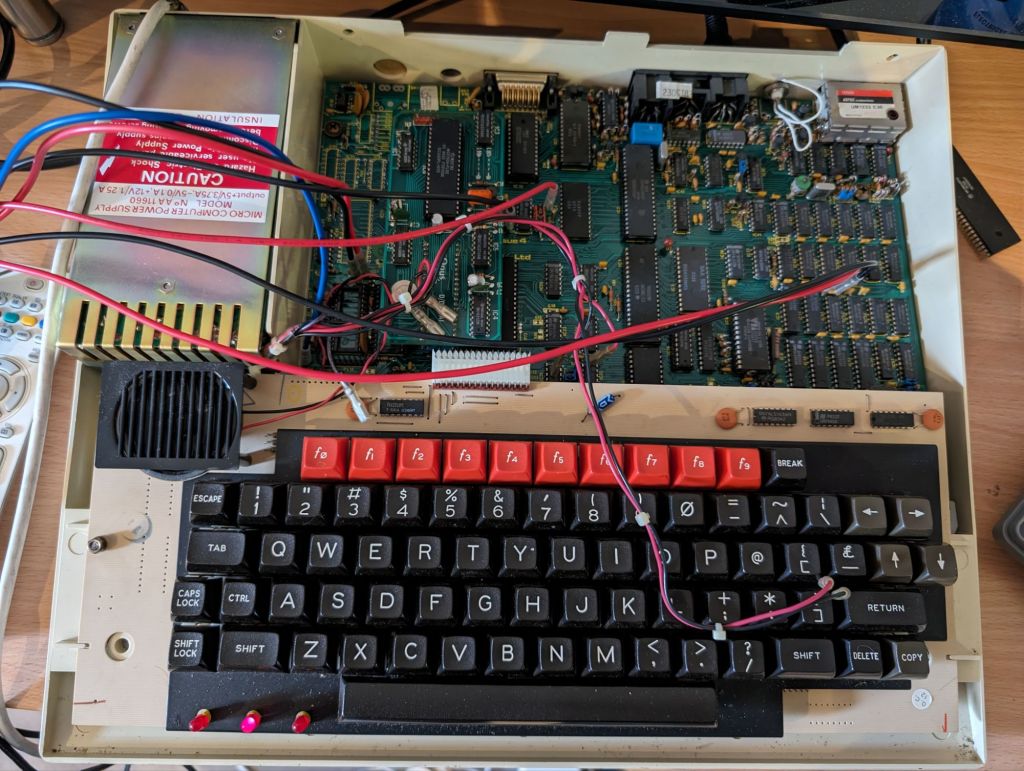


That is a pretty good sign. It boots and sees the ROMs which means probably 80% of the motherboard at least is working fine. I could have tested the disk interface at this stage, but decided to leave it until later.
Power Supply
I opened the power supply up in my usual way, but this took a lot longer than normal. Instead of using regular thread lock, whoever assembled this one appears to have used some strong hot-snot glue over the screw itself. So I had to dig it out of the head before I could use a screwdriver. This was on all screws and the earthing bolts/nuts of the PSU.
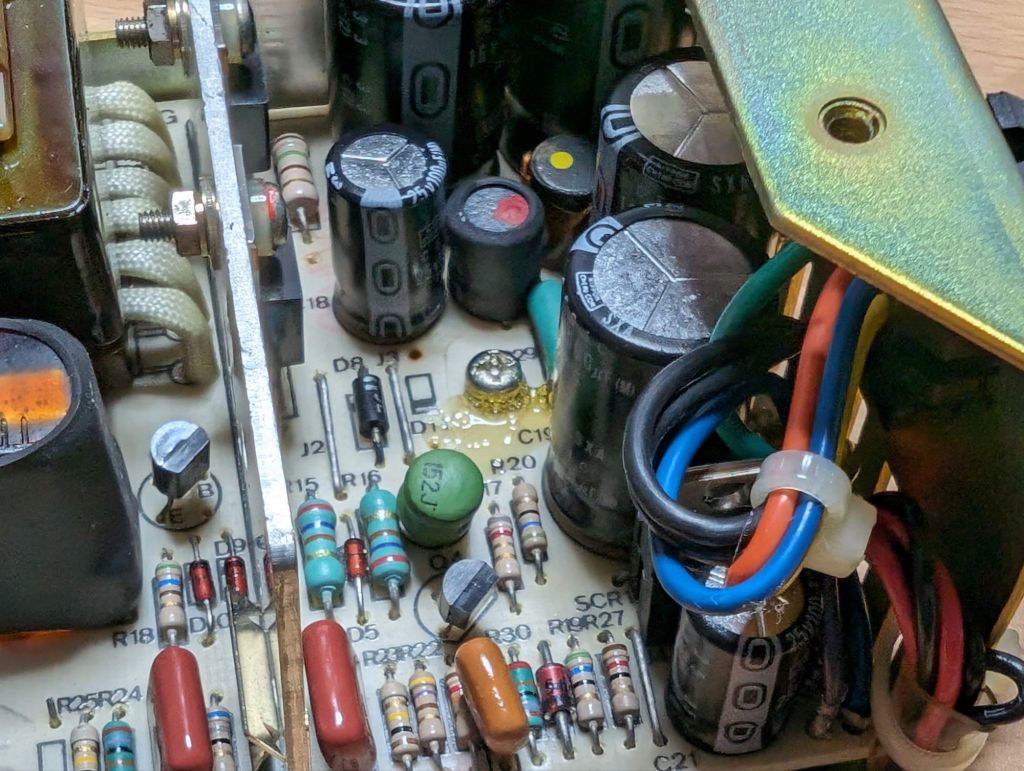
Once I got the board out, I pulled the Rifa capacitors and startup capacitor. The startup capacitor actually had a value just about in tolerance and a low ESR, but I replaced it anyway. The Rifas, as with every BBC I have refurbished, were in a bad state. Whilst the large one had split, the BBC didn’t smell bad. I’m assuming this either popped long ago, or hadn’t released the magic smoke just yet.
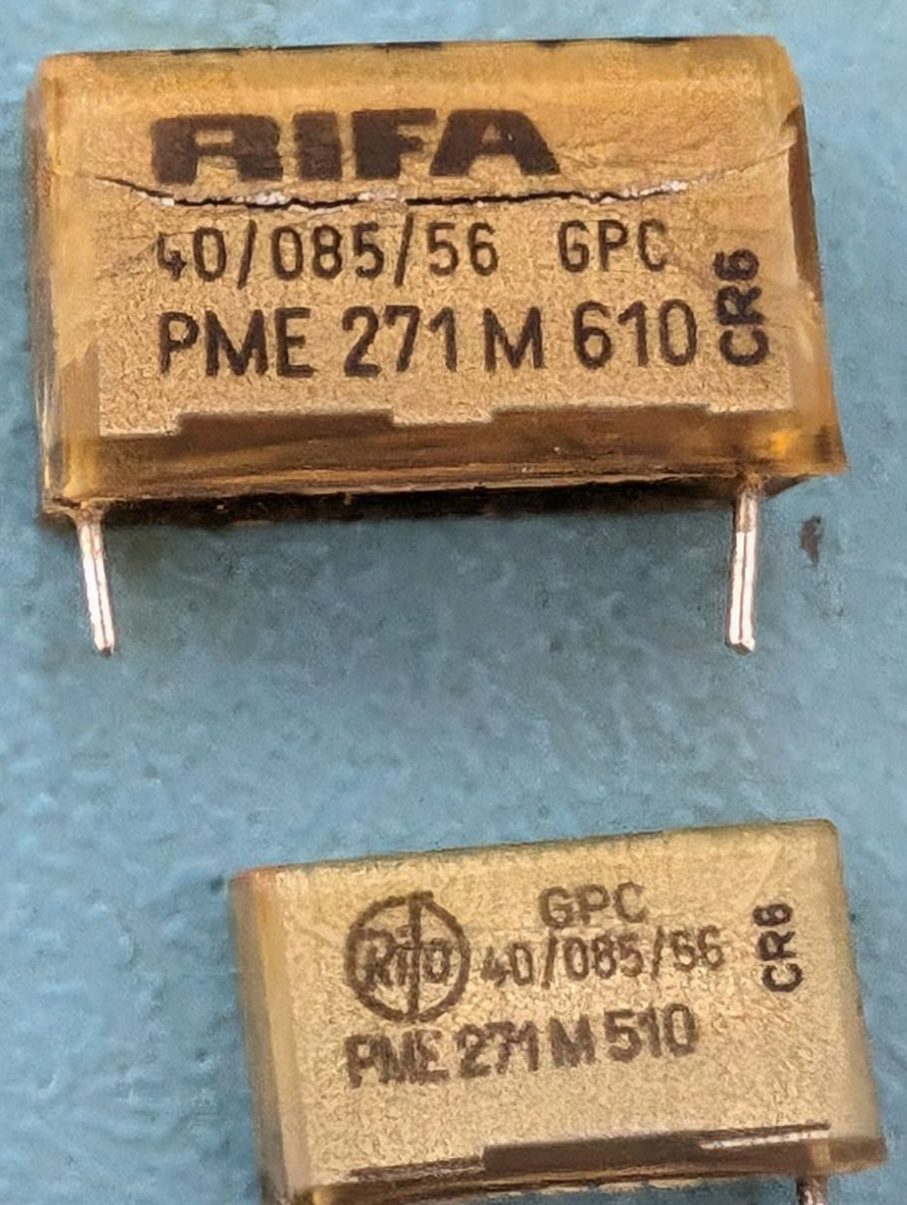
After these were replaced, the PSU was reassembled and tested with a load on it. The voltages all looked good.
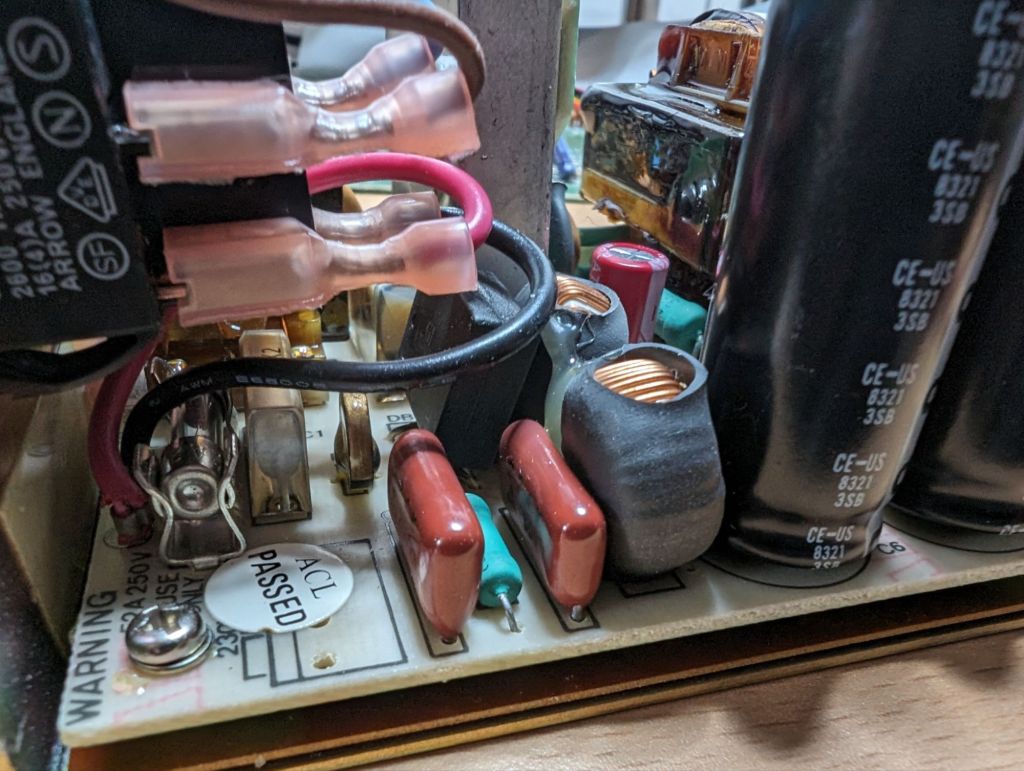
Reassembly and Cleanup
Now with a good PSU, I reassembled the machine, making sure everything was cleaned up a bit as I went. A final quick test showed the BBC and original PSU working together in unison. It just needed a good clean of the outside plastics.
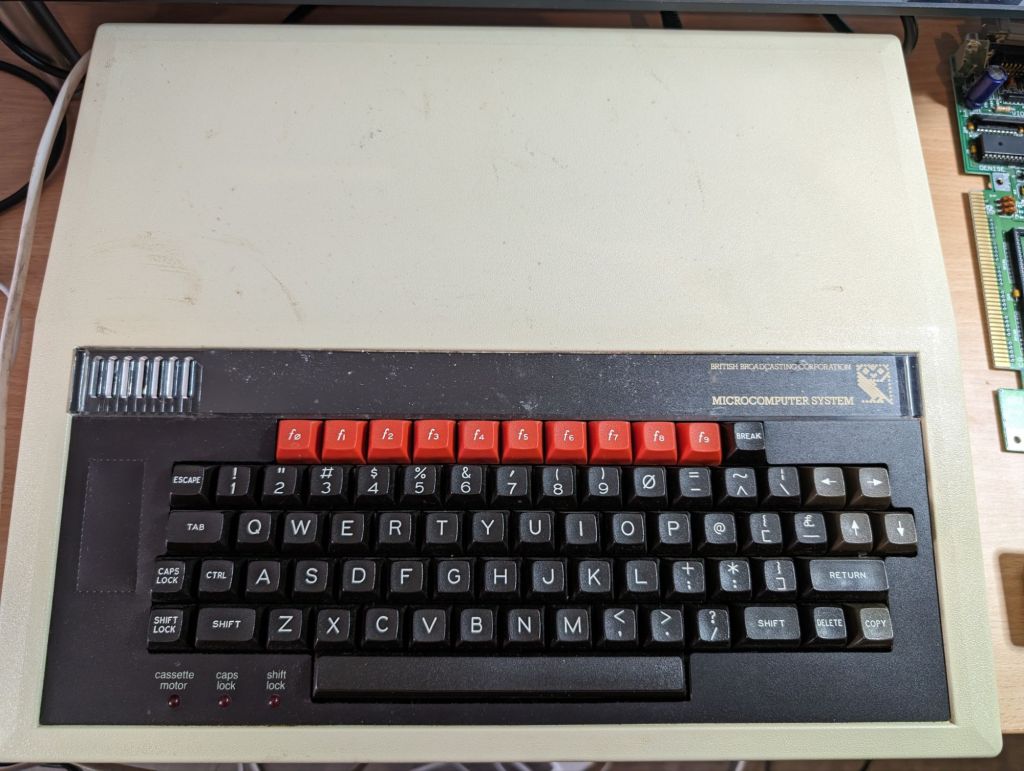

Disk Drive
This BBC came with a double disk drive, let’s see if that works next. I opened it up before trying it out to make sure there were no surprises.
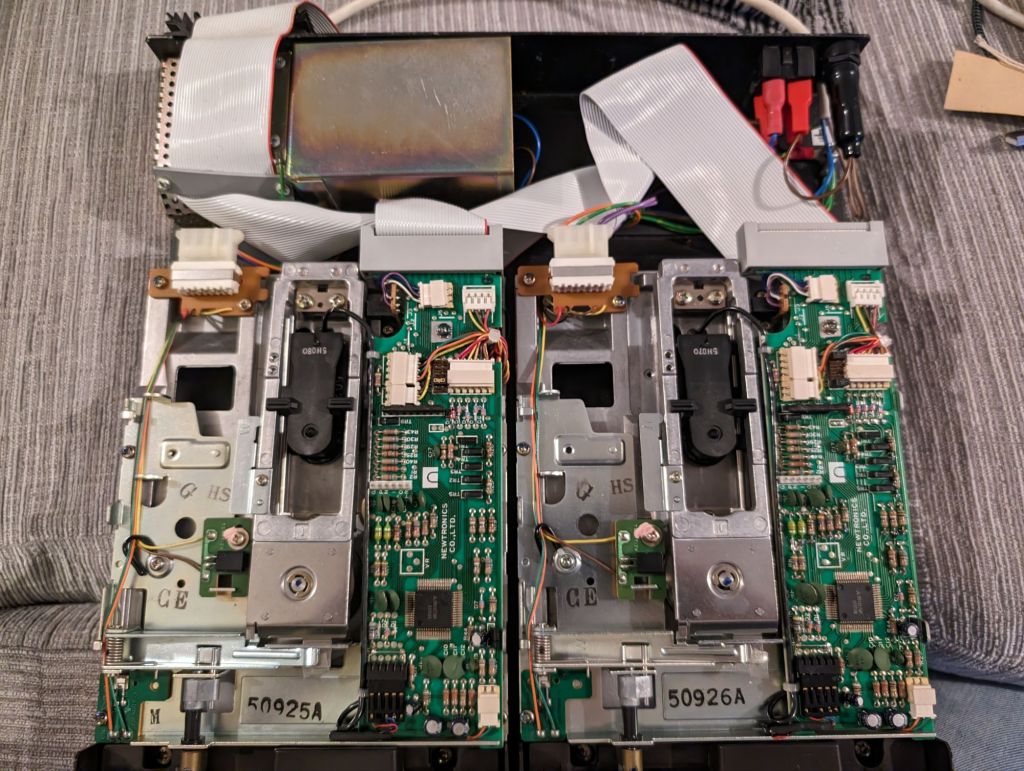
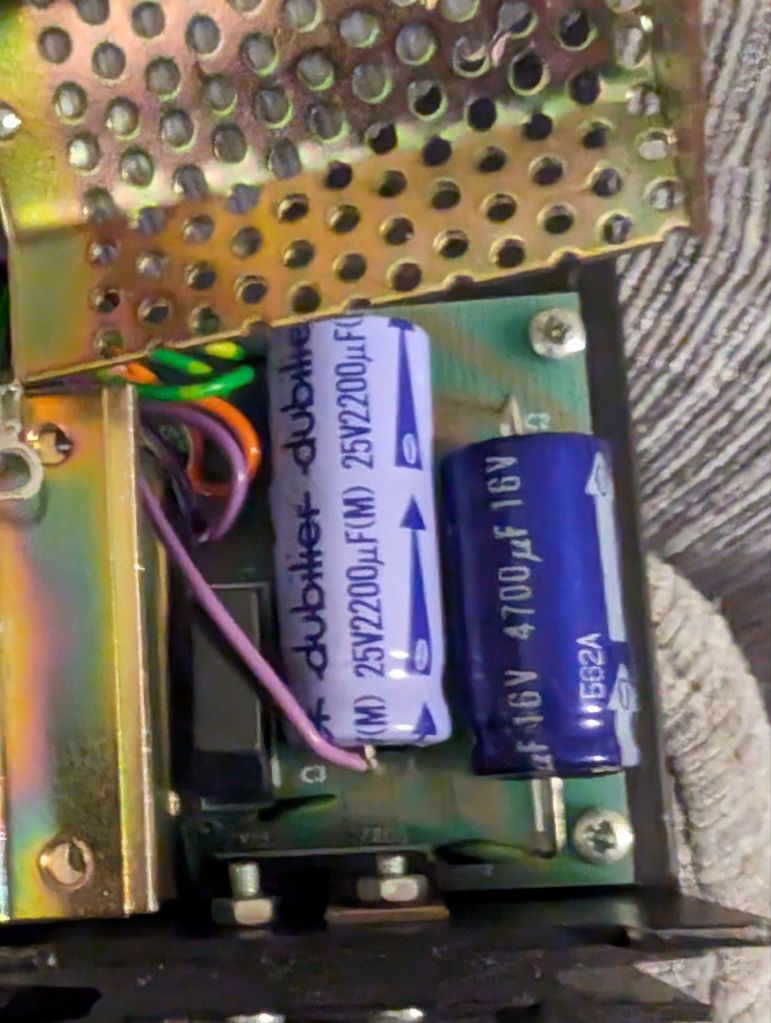
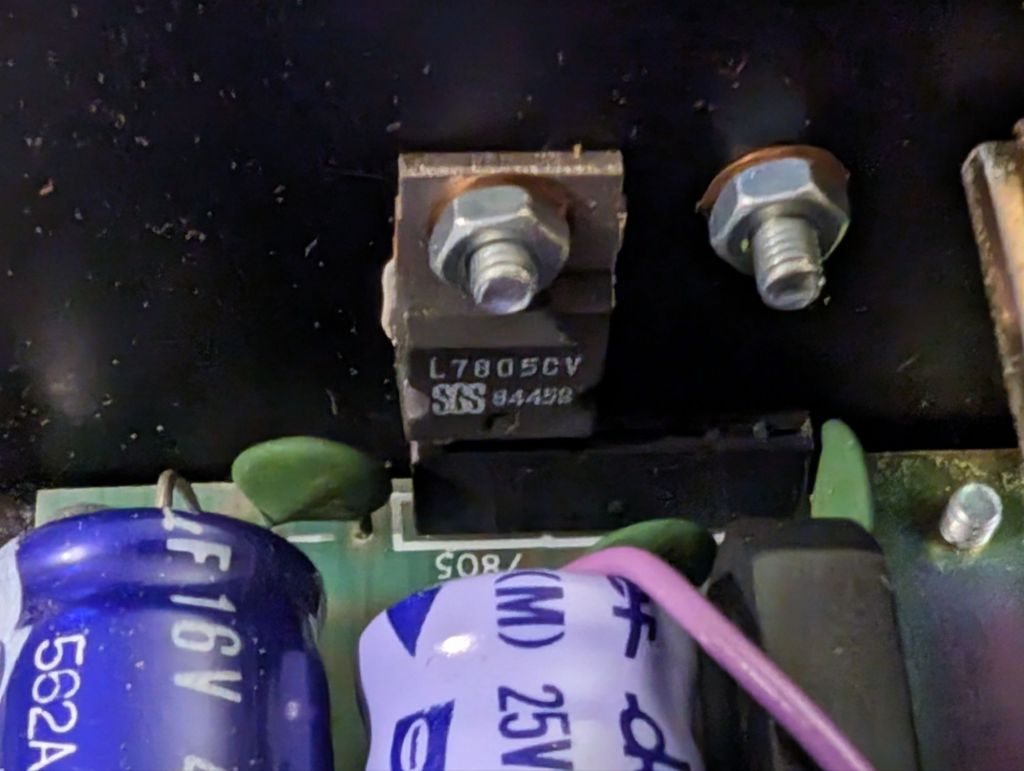
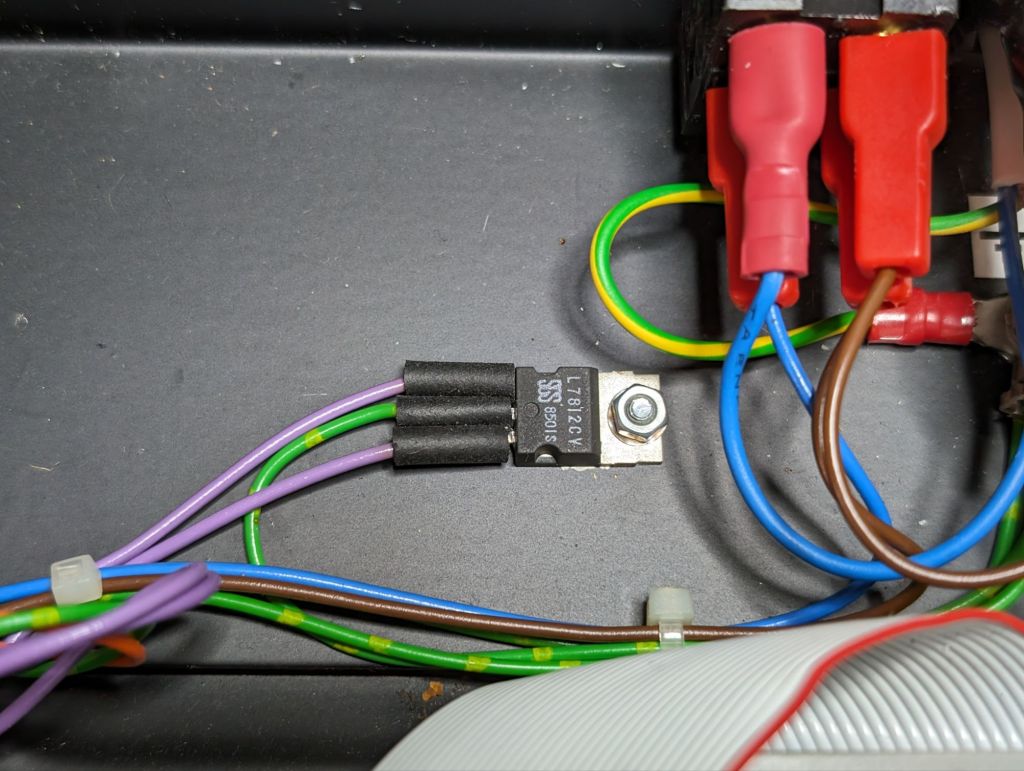
The drives themselves look immaculate, and the power supply is quite simple. It has a step-down transformer, a bridge rectifier, linear voltage regulators for 12v and 5v, and a couple of capacitors. I tested the capacitors, and they were in great condition for capacitance and ESR.
The drives appear to be 40 track single-sided drives, in the PC world you would call these single-sided single-density. Which would make this a model CD200.
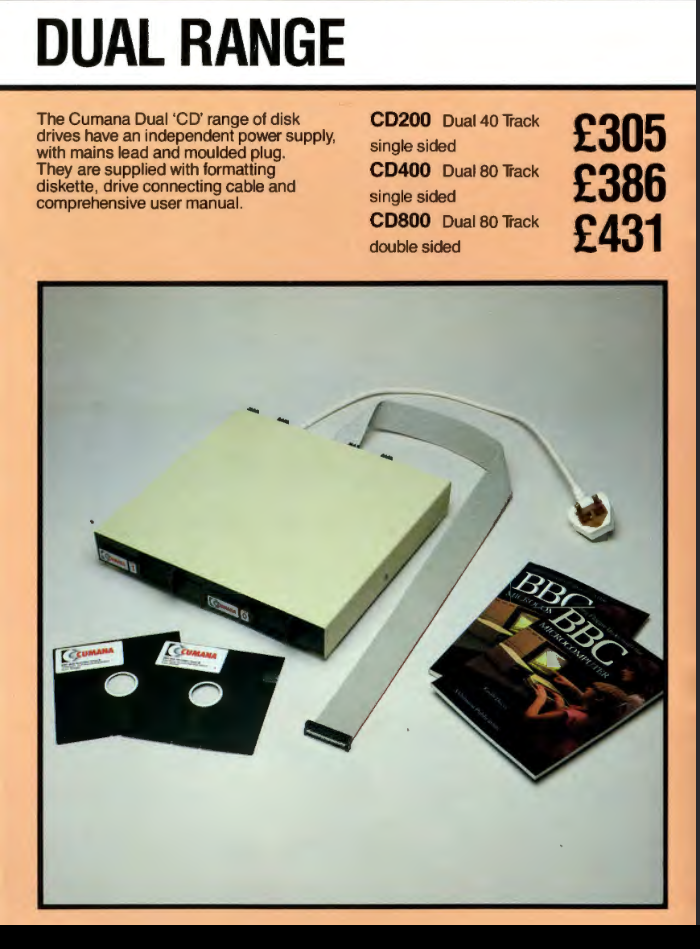
I popped a disk into drive 0, turned it on, popped in Elite and tried to load it.
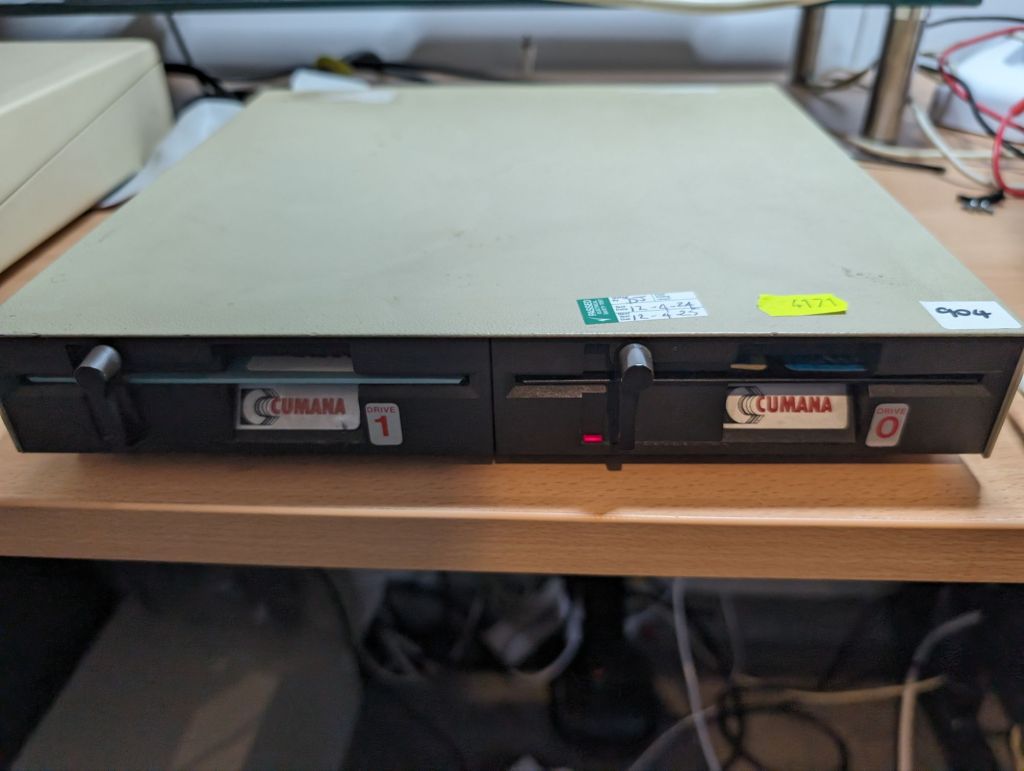
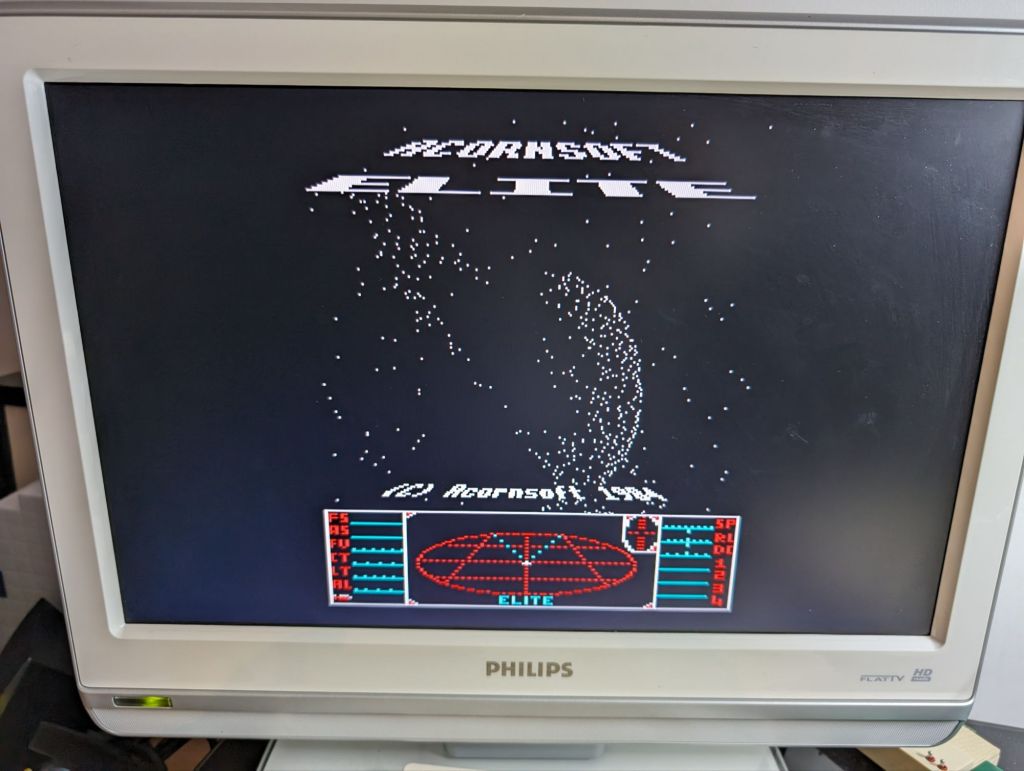
Excellent! This drive seems to work well. But when I went to drive 1, it appeared to be dead. Then I went back to drive 0, and it also appeared to be dead. Eh?
I unplugged the power to drive 1 and used a multimeter to check the voltages on the connector. Sometimes when powered up it was fine, sometimes they were almost non-existent. Something was quite wrong here.
I replaced both the regulators with new ones. They should have been fine as they were good quality ST ones, but maybe one was bad. I also checked the rectifier and that was good. But I was still having issues. What is very likely is that the transformer has a thermal fuse that is bad. This is unfortunate because the transformer is completely sealed, this is not fixable.
But what about the drive? I hooked it up to a Greaseweazle F7 Lightning+, which can provide the needed 12V.
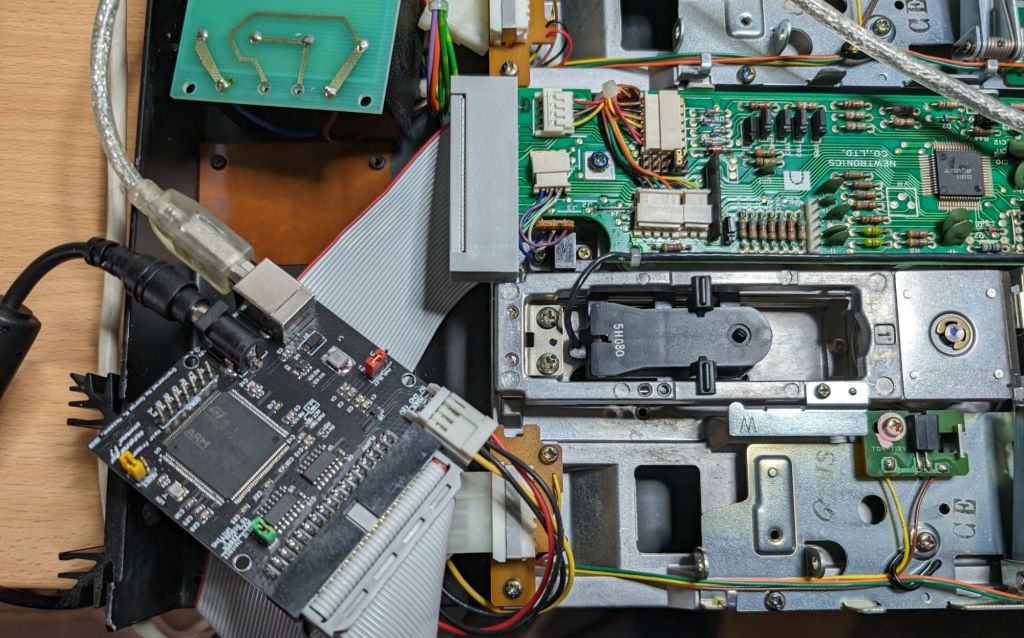
This was not great news, the drive was spinning up and heads moving, but it was not reading the disk properly. I double-checked with the other drive and the Greaseweazle and that worked perfectly.
My best guess is that this drive is out of alignment. Which would be a solvable problem. But I am not an expert at doing this. I may well put this with a bunch of other faulty drives to give to someone else who might want to fix them.
What Next?
As for what to do next with this twin drive? I don’t know yet. I have one good drive which I could use. I also have a bunch of BBC floppy drives still to test, so it could go in an enclosure if one of those has also failed. Alternatively, I could also put together a new PSU for this and replace the second drive. This is something to ponder in the future.
I also need to make a decision on the BBC Micro. There are too many in my collection now, so I’ll need to sell one of them.

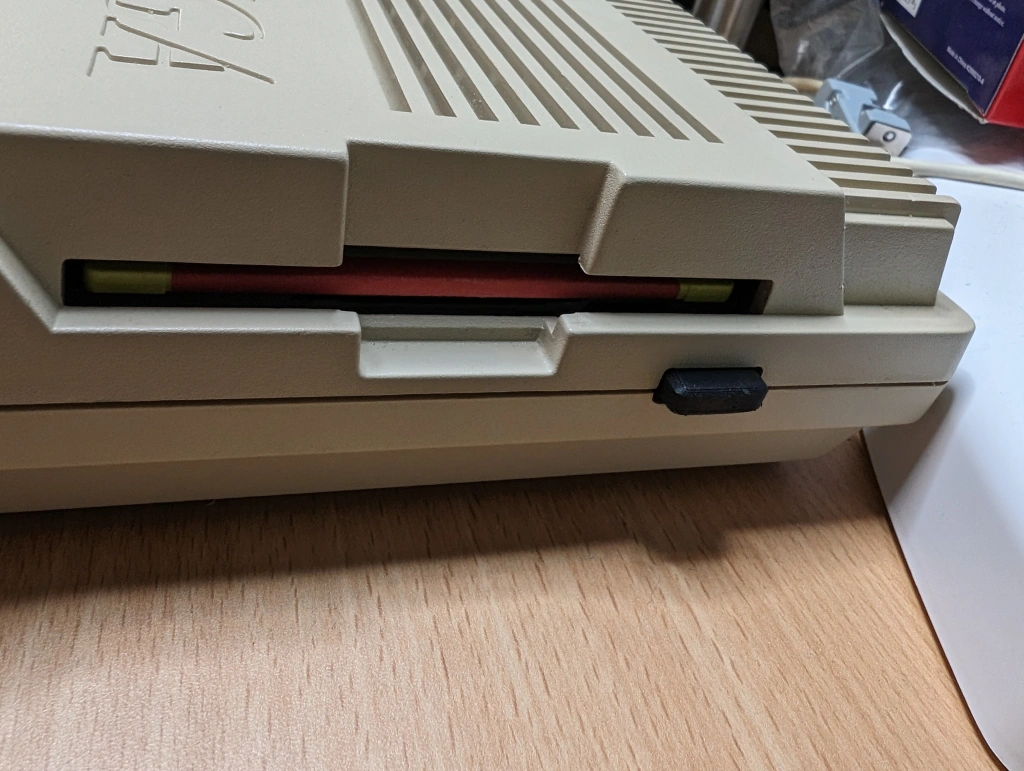
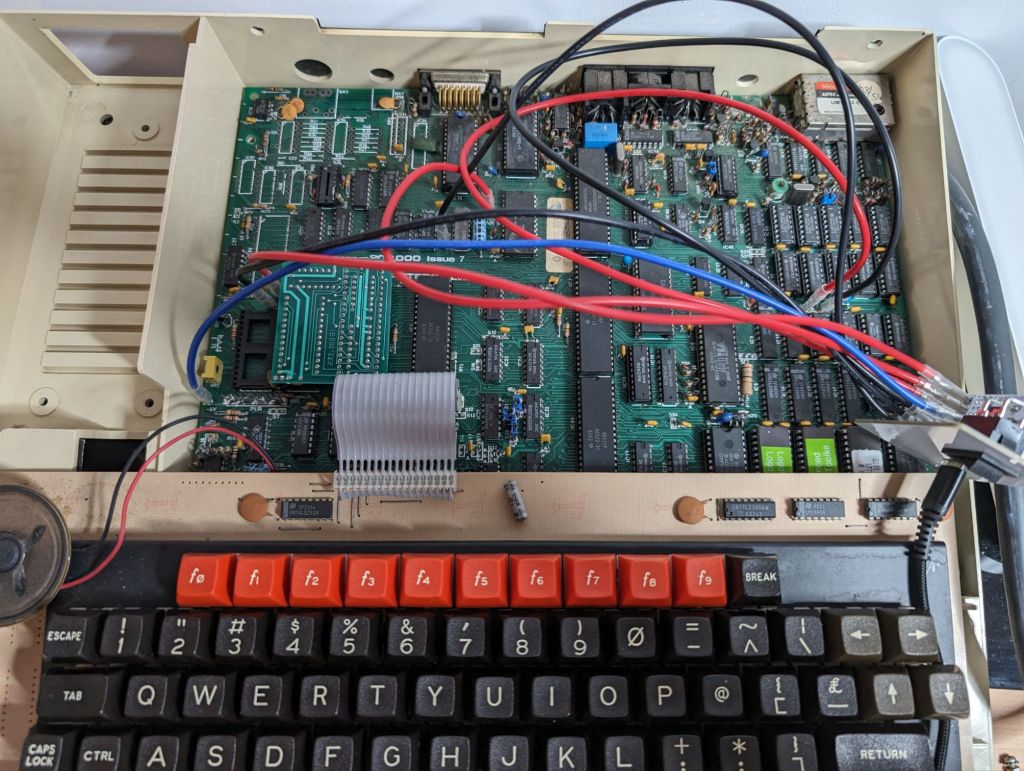
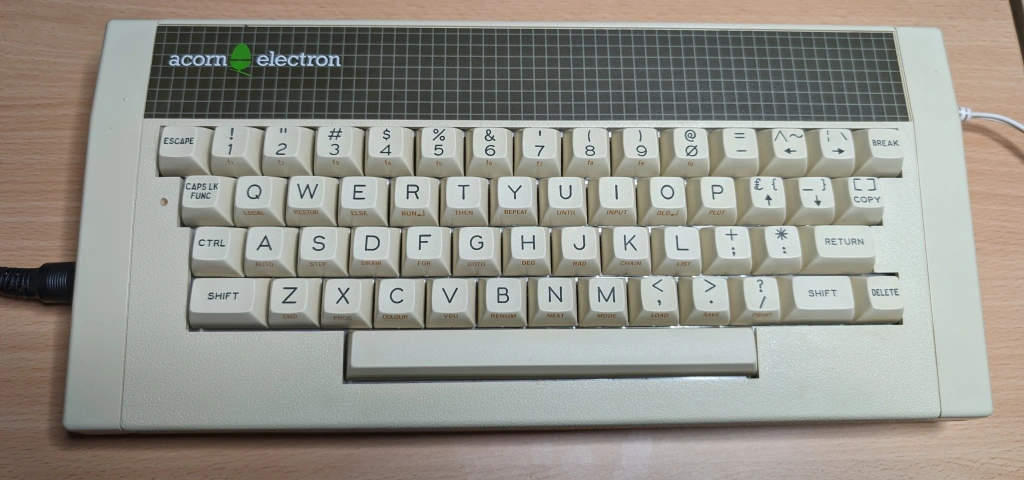
Leave a comment